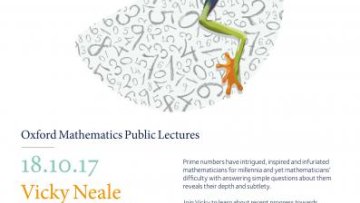State constrained optimal control problems via reachability approach.
Abstract
This work deals with a class of stochastic optimal control problems in the presence of state constraints. It is well known that for such problems the value function is, in general, discontinuous, and its characterisation by a Hamilton-Jacobi equation requires additional assumptions involving an interplay between the boundary of the set of constraints and the dynamics
of the controlled system. Here, we give a characterization of the epigraph of the value function without assuming the usual controllability assumptions. To this end, the stochastic optimal control problem is first translated into a state-constrained stochastic target problem. Then a level-set approach is used to describe the backward reachable sets of the new target problem. It turns out that these backward reachable sets describe the value function. The main advantage of our approach is that it allows us to easily handle the state constraints by an exact penalisation. However, the target problem involves a new state variable and a new control variable that is unbounded.
Multilevel Monte Carlo for Estimating Risk Measures
Abstract
This talk will discuss efficient numerical methods for estimating the
probability of a large portfolio loss, and associated risk measures such
as VaR and CVaR. These involve nested expectations, and following
Bujok, Hambly & Reisinger (2015) we use the number of samples for the
inner conditional expectation as the key approximation parameter in the
Multilevel Monte Carlo formulation. The main difference in this case is
the indicator function in the definition of the probability. Here we
build on previous work by Gordy & Juneja (2010) who analyse the use of a
fixed number of inner samples , and Broadie, Du & Moallemi (2011) who
develop and analyse an adaptive algorithm. I will present the
algorithm, outline the main theoretical results and give the numerical
results for a representative model problem. I will also discuss the
extension to real portfolios with a large number of options based on
multiple underlying assets.
Joint work with Abdul-Lateef Haji-Ali
Using FX Volatility Skews to Assess the Implied Probability of Brexit, Trump Election, and Hard Brexit
Abstract
In the 12 months from the middle of June 2016 to the middle of June 2017, a number of events occurred in a relatively short period of time, all of which either had, or had the potential to have, a considerably volatile impact upon financial markets. The events referred to here are the Brexit referendum (23 June 2016), the US election (8 November 2016), the 2017 French elections (23 April and 7 May 2017) and the surprise 2017 UK parliamentary election (8 June 2017).
All of these events - the Brexit referendum and the Trump election in particular - were notable both for their impact upon financial markets after the event and the degree to which the markets failed to anticipate these events. A natural question to ask is whether these could have been predicted, given information freely available in the financial markets beforehand. In this talk, we focus on market expectations for price action around Brexit and the Trump election, based on information available in the traded foreign exchange options market. We also investigate the horizon date of 30 March 2019, when the two year time window that started with the Article 50 notification on 29 March 2017 will terminate.
Mathematically, we construct a mixture model corresponding to two scenarios for the GBPUSD exchange rate after the referendum vote, one scenario for “remain” and one for “leave”. Calibrating this model to four months of market data, from 24 February to 22 June 2016, we find that a “leave” vote was associated with a predicted devaluation of the British pound to approximately 1.37 USD per GBP, a 4.5% devaluation, and quite consistent with the observed post-referendum exchange rate move down from 1.4877 to 1.3622. We find similar predictive power for USDMXN in the case of the 2016 US presidential election. We argue that we can apply the same bimodal mixture model technique to construct two states of the world corresponding to soft Brexit (continued access to the single market) and hard Brexit (failure of negotiations in this regard).


